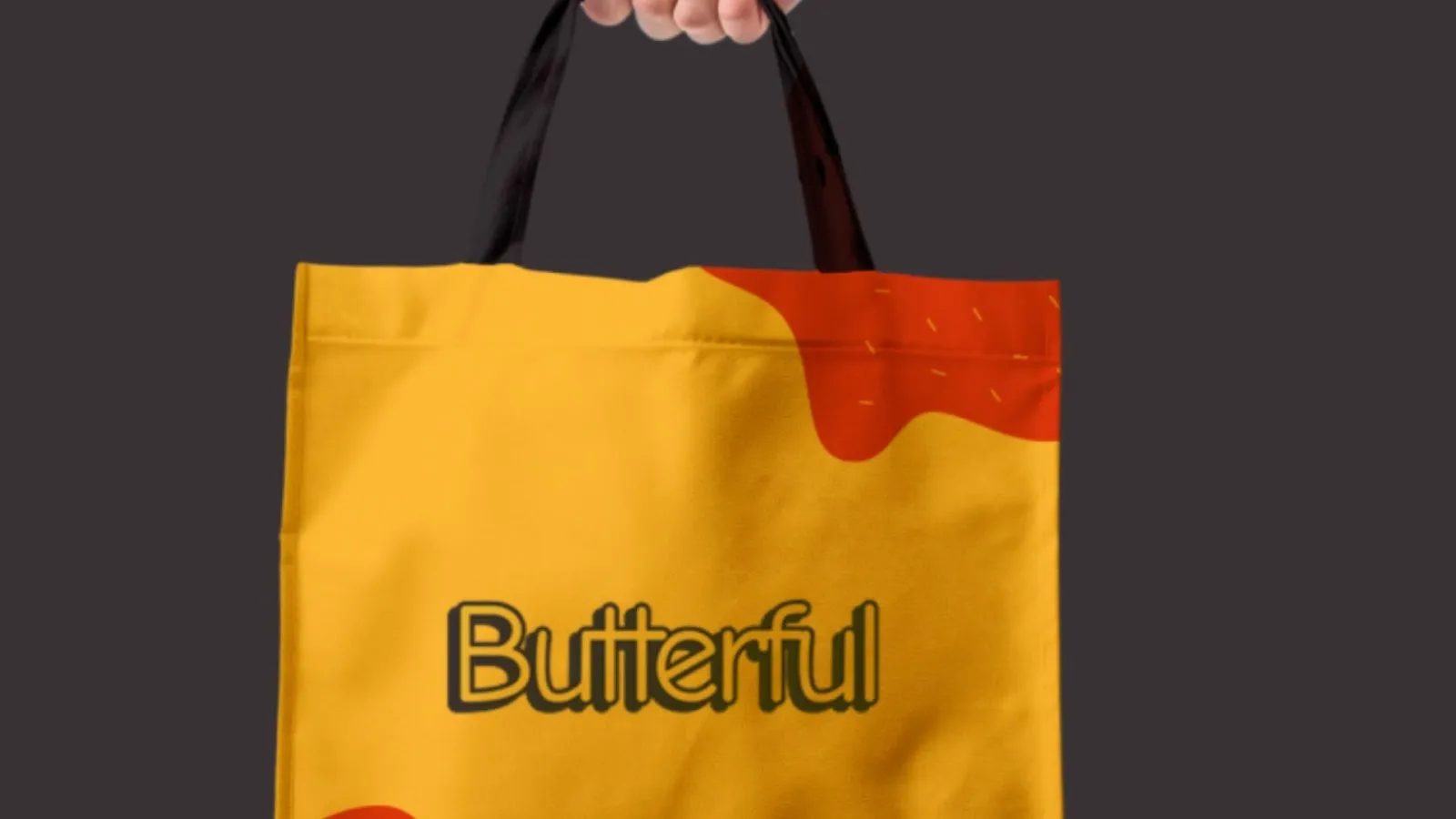.svg)
.svg)
.svg)
.svg)
.svg)
.svg)
.svg)
.svg)
Book a call and get unlimited revisions for your project!
.webp)
.svg)

If your brand could speak, what would it sound like? Would it be bold and confident, soft and reassuring, or quirky and fun? The voice of your brand is communicated long before a customer reads a single word of copy, and it starts with your choice of typography. Effective typography branding is not just about picking pretty fonts; it's a strategic decision that shapes perception, builds trust, and gives your brand a distinct personality.
Your brand's typography is the visual equivalent of its tone of voice. It sets the mood and tells a story, influencing how customers feel about your products and your company as a whole. Just as you wouldn't use a playful, bubbly voice for a serious legal discussion, you wouldn't use a whimsical script font for a financial institution. Understanding the role of typography in branding is fundamental to creating a cohesive and memorable identity.
As a founder, you live and breathe your brand's mission. But how do you make sure that mission is felt by your customers? You can't be in every sales meeting or on every customer service call. That’s where typography comes in. Think of it as your brand's silent ambassador, working 24/7 to communicate your company's personality. Is your brand bold and disruptive, or is it calm and trustworthy? The fonts you choose are doing that storytelling for you.
For a founder, getting typography right isn't about decoration; it's about delegating your brand's voice to a visual system that works tirelessly to build the exact perception you want in the market. It's a strategic decision that ensures your vision is communicated consistently, even when you're not in the room.
Many business owners think of typography as a final, decorative touch. In reality, it’s a core component of your brand strategy. The fonts you use on your website, your packaging, and your marketing materials all contribute to your brand's identity. This visual language speaks directly to your audience, often on a subconscious level.
Think about the brands you interact with daily. Coca-Cola's custom Spencerian script feels classic, friendly, and timeless. Google's simple, geometric sans-serif font, Product Sans, feels modern, accessible, and clean. Each of these choices was deliberate. They weren't picked because they looked nice; they were chosen because they communicate the core values of the brand. Poor font choices can lead to a disconnect. If you’re a high-end skincare brand but use a font that looks cheap or generic, you create confusion and undermine the premium quality of your products.

The shapes, weights, and styles of letters trigger specific psychological associations. This is a powerful tool in branding. The right brand fonts can make your company appear more trustworthy, innovative, or luxurious.
A study by the MIT Media Lab found that even the same content presented in different fonts could dramatically alter a reader's perception of its truthfulness. A font like Baskerville, with its formal and authoritative feel, was found to be more believable than a more casual font like Comic Sans. This demonstrates that the typography brand voice isn't just an artistic concept; it has a measurable impact on consumer trust and behavior.
For retail brands, especially in crowded markets like food and beverage or personal wellness, this is critical. Your packaging is your first handshake with a customer. Does your font choice say "natural and organic" or "scientific and effective"? Does it feel premium or budget-friendly? These silent messages can be the difference between a customer picking your product off the shelf or walking right past it. If you're struggling to make your products stand out, our expert packaging design services can help you find the right visual voice.
One of the first decisions in choosing fonts for branding is often whether to use a serif or a sans-serif typeface. While there are thousands of font styles, this is the most fundamental distinction.
This isn't a strict rule, of course. Many brands successfully mix the two, using a serif for headlines and a sans-serif for body text, creating a balanced and dynamic look. The key is to understand the inherent personality of each style and choose the one that aligns with your brand's core message.
Feeling stuck between modern and traditional? Building a cohesive brand identity that resonates with your audience is our specialty. Let's talk about your brand's voice—book a call with our design experts to get started.
The application of typography is where the theory meets the real world. For retail brands, the two most important battlegrounds are the store shelf and the digital screen.
On product packaging, typography has to work hard. It needs to grab attention from a distance, be legible in a split second, and convey the product's key benefits. Think about supplement packaging. A brand focused on high-performance athletic gains might use a bold, condensed sans-serif font to communicate power and efficiency. In contrast, a wellness supplement brand focused on calm and relaxation might use a lighter, more spaced-out font with soft, rounded edges. We helped a brand find its powerful voice, as you can see in this real-world example of our work.
On a website, the primary goal of typography is readability and user experience. If your text is hard to read, users will leave. This is why many e-commerce sites use clean sans-serif fonts for body copy. However, the headers and call-to-action buttons are opportunities to inject more personality with a distinct brand font. Consistency is also vital. The fonts used on your website should match the fonts on your packaging and other marketing materials to create a seamless brand experience. This consistency builds recognition and reinforces your brand identity at every touchpoint.

Selecting the right typography for your brand can feel daunting. Here are some practical best practices to guide your decision-making process.
You don't have to be a professional designer to start exploring the world of typography. There are many excellent resources available to help you find and test potential brand fonts.
While these tools are a great starting point, building a complete and effective typography system is a complex task. For brands in Delhi looking to make an impact, working with a specialized packaging agency in Delhi can ensure your visual identity is professional and powerful.
Navigating the nuances of typography is just one piece of the larger brand-building puzzle. For founders and marketing leaders in the retail space—from food and beverage to beauty and wellness—creating a cohesive experience is everything. That’s where Confetti comes in. We operate as a specialized, one-stop agency focused exclusively on retail brands. By integrating core services like branding, packaging design, and AI photography, we eliminate the complexity and risk that comes from juggling multiple freelancers or generalist agencies. Our goal is to be the only partner you need to build a powerful and consistent brand that stands out on the shelf and online.
Your brand's typography is more than just text; it's the visual expression of your identity. It shapes how customers perceive you, builds trust, and helps you stand out in a crowded marketplace. From the role of typography in branding to the practicalities of choosing fonts for branding, every decision matters. By selecting fonts that are readable, reflective of your personality, and consistent across all platforms, you give your brand a clear and compelling voice that connects with your audience.
Ready to find the perfect voice for your brand? Our team at Confetti specializes in creating cohesive brand identities and standout product packaging for ambitious retail businesses. Book a call today to see how we can help your brand speak volumes.
Does typography really matter in branding?
Yes, it absolutely matters. Typography is a key element that influences how consumers perceive your brand's personality, professionalism, and trustworthiness, directly impacting purchasing decisions and brand loyalty.
What are the most timeless fonts for brands?
Some of the most timeless fonts that have been trusted by brands for decades include Helvetica for its clean neutrality, Garamond for its classic elegance, and Futura for its geometric modernism.
How do I keep typography consistent across platforms?
The best way to ensure consistency is by creating a brand style guide. This document should specify your primary, secondary, and accent fonts, along with rules for their size, weight, and usage across all materials, from your website to your packaging.
How many fonts should a brand use?
It is best to limit your brand to two or three fonts. This typically includes a primary font for headlines, a secondary font for body text, and an optional accent font for specific elements like buttons or quotes to maintain a clean and professional appearance.
What is the difference between a font and a typeface?
A typeface is the design of the letterforms, like Helvetica or Times New Roman. A font is a specific style within that typeface family, such as "Helvetica Bold" or "Times New Roman Italic 12pt."
Lorem ipsum dolor sit amet, consectetur adipiscing elit, sed do eiusmod tempor incididunt ut labore et dolore magna aliqua. Ut enim ad minim veniam, quis nostrud exercitation ullamco laboris nisi ut aliquip ex ea commodo consequat. Duis aute irure dolor in reprehenderit in voluptate velit esse cillum dolore eu fugiat nulla pariatur.
Block quote
Ordered list
Unordered list
Bold text
Emphasis
Superscript
Subscript


.svg)